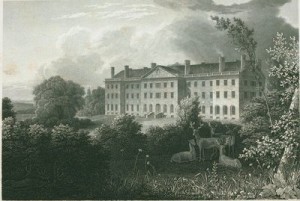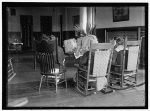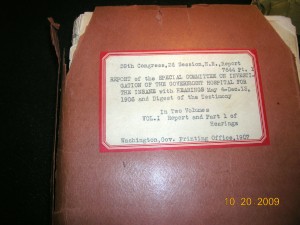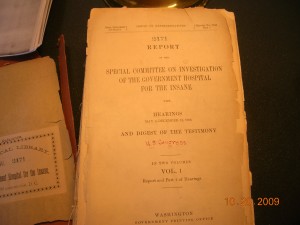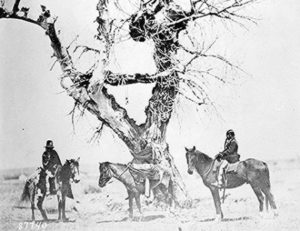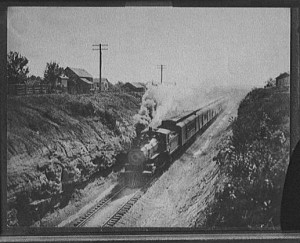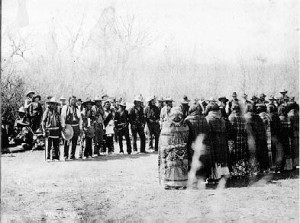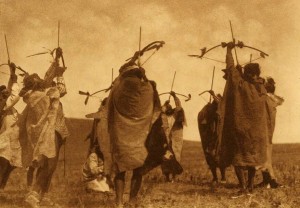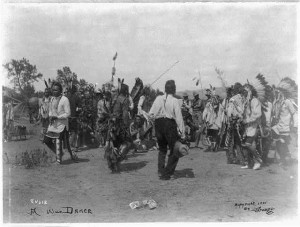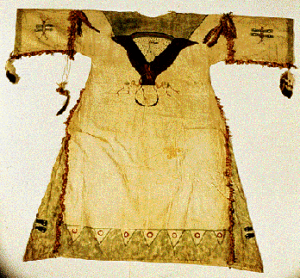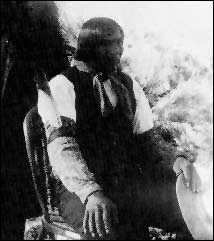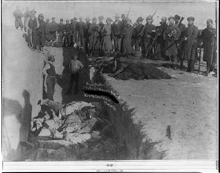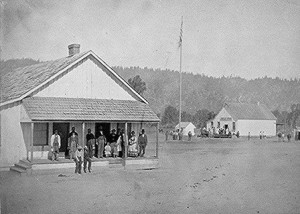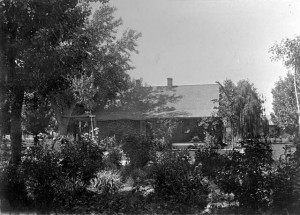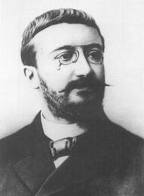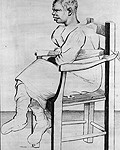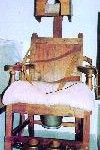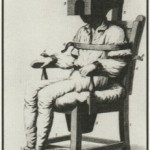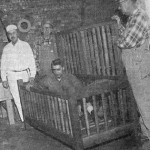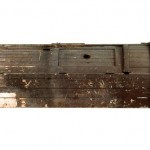The public has always enjoyed a good scandal, and madhouses of the 19th and 20th centuries sometimes provided horrific fodder for newspapers eager to sensationalize problems. Nellie Bly’s stay at Blackwell’s Island Lunatic Asylum was well publicized, but abuses existed elsewhere as well. Continue reading
Bad Management
Investigations into insane asylums, hospitals, prisons, and other public institutions were nothing unusual. Any place that houses unhappy inmates will generate plenty of complaints–some warranted and some not.
Canton Asylum had received a routine inspection in early 1903 and apparently passed with little comment on anyone’s part. It was undoubtedly still so new and small that there wouldn’t have been much to find wrong.
However, an established institution in the nation’s capitol couldn’t avoid scrutiny. In 1906, St. Elizabeths Hospital was targeted by the newly established Medico-Legal Society, who said that St. Elizabeths abused patients. Congress investigated the allegations and gathered over 2,000 pages of testimony–which was often lively, pointed, and contradictory. Some of the patients and their families spoke up on behalf of the care they received at St. Elizabeths, and the motivations of the Medico-Legal Society were questioned in the city’s newspapers.
_________________________________________________________
Death at Canton Asylum
Robert Brings Plenty, a Sioux Indian from South Dakota’s Pine Ridge reservation, was one of Canton Asylum’s first patients. He lasted less than one year, dying of (probably) an epileptic episode on May 20, 1903. Continue reading
Canton Asylum’s First Patients
On January 10, 1903, the superintendent at St. Elizabeths hospital in Washington, D.C. received permission to release its Indian patients to the Canton Asylum for Insane Indians in South Dakota. The first patients were:
Chu-rah-rah-he-kah; Pawnee from the Ponca Agency; suffering from chronic mania
Joseph D. Marshall; Sioux from the Rose Bud Agency; suffering from chronic epileptic dementia
Miguel Maxcy; Mesa Grande froom the Carlisle Indian School; suffering from chronic meloncholia
Robert Brings Plenty; Sioux from the Pine Ridge Agency; suffering from chronic epileptic dementia
John Woodruff; Sioux-Mulatto from the Pine Ridge Agency; suffering from chronic meloncholia
Arch Wolf; Cherokee transferred from the penitentiary at Brooklyn New York; suffering from acute melancholia
These patients arrived at the Canton Asylum under escort of Dr. J.E. Toner, who received $157.71 reimbursement for expenses.
_________________________________________________________
Dancing to their Own Tune
Dancing and music tell stories in many cultures. Native American dances can act as forms of prayer, purification, initiation, ceremony, and healing. The Sun Dance, for instance, had varied forms depending upon the tribe performing it. It was held in late spring or summer (annually) and could last up to four days. The dancers fasted during its performance, and hoped to see a vision.
The Ute Bear Dance was another spring dance, performed when the first thunder was heard. The origins go back several hundred years and show respect for the spirit of the bear. Men and women (who wear shawls) form separate lines and dance in a back and forth pattern. After the four-day dance, men could leave the plumes they were wearing on a cedar tree, and symbolically leave their troubles behind them.
Many Native American dances are still performed today.
__
____
Dance Fever
By 1889 many Indian tribes were in a state of despair from poverty, hunger, and disease. A Paiute shaman named Wovoka (1854?- 1932)had a vision in which white people were destroyed, and the earth reborn and returned to Indians. Buffalo and antelope would be plentiful again, and there would be no more hunger and violence. Believers took part in ceremonial cleansing, meditation, and prayer, and endeavored to hasten the new beginning through the Ghost Dance.
Many tribes, but especially the Lakota Sioux, embraced Wovoka’s vision. The U.S. government feared a new wave of violence because of his predictions about the destruction of whites, and banned the Ghost Dance. The government’s determination to destroy this apocalyptic religion led to the Massacre at Wounded Knee.
_________________________________________________________
Movers and Shakers: Part Two
The Commissioner of Indian Affairs was a powerful man, but another man was almost as powerful in the daily lives of Native Americans. This was the Indian agent, who for most intents and purposes, made the daily decisions that really affected reservation life.
Indian agents were originally appointed to live among the various tribes, watch their movements, and promote good will via trade, during the Revolutionary War. They reported to superintendents, who reported to Washington. By the mid-nineteenth century, agents reported directly to the commissioner of Indian Affairs and virtually ran the reservations. Most agents were white civilians. They could be honorable men, with the interests of their Indian charges at heart, or they could be petty tyrants. The Indians under their control didn’t have a say in the matter.
_________________________________________________________
Movers And Shakers
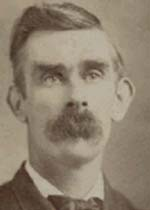 Congress created the position of Commissioner of Indian Affairs in 1832, when the “Indian Office” (the common name for the Bureau of Indian Affairs) still fell within the War Department. Its first commissioner was Elbert Herring.
Congress created the position of Commissioner of Indian Affairs in 1832, when the “Indian Office” (the common name for the Bureau of Indian Affairs) still fell within the War Department. Its first commissioner was Elbert Herring.
William A. Jones (Sept. 27, 1844 – Sept. 17, 1912) became Commissioner of Indian Affairs in 1897 and continued in the position until 1905. One of the last armed conflicts between Native Americans and U.S. troops occurred at Sugar Point on the eastern shore of Minnesota’s Leech Lake in 1898. Ojibwe Indians had been angered by what they considered unfair treatment and the too-frequent arrests of Ojibwe men. When U.S. troops tried to re-arrest Bug-O-Nay-Ge-Shig (Hole in the Day) after he had escaped a U.S. marshal, they got into a skirmish that left them with six dead and ten wounded. The Ojibwe suffered only one injury.
William Jones arrived at Leech Lake and held council with the Ojibwe leaders. He later condemned “the frequent arrests on trivial causes, often for no cause at all.” Jones said that the Ojibwes would now go home and live peaceably if the whites would treat them fairly, and added that the spirited stand the Ojibwes had taken had taught the white people a lesson.
_____________________________________________________
Are You Smarter Than An Indian?
In 1905 Alfred Binet (1857-1911) commonly known as the “father” of IQ testing, developed techniques to assess intelligence in primary grade children who were not successful in normal classrooms.
Binet chose a series of 30 short tasks with simple instructions, that related to everyday problems of life. Examples of these tasks are:
- name parts of the body
- compare lengths and weights
- count coins
- assess which of several faces is “prettier”
- name objects in a picture
- define words
Binet then compared the tested child’s results against a norm of “average” children and assigned a mental age to the subject.
He recognized that a test could be intimidating. Binet recommended that: “The examination should take place in a quiet room… […]It is important that when a child sees the experimenter for the first time, he should be reassured by the presence of someone he knows, a relative, an attendant, or a school superintendent. […]If he refuses to reply to a test, pass to the next one, or perhaps offer him a piece of candy; if his silence continues, send him away until another time.”
Imagine the circumstances under which most mental tests would have been administered to Native Americans–who didn’t understand English, or had a different cultural notion of “pretty,” or perhaps had never counted coins. Confused, perhaps intimidated or frightened, many would have been found “defective” by their examiners.
_________________________________________________________
Proven Ways to Keep a Troublemaker Quiet
Historically, the treatment of the insane has been riddled with abuse, neglect, and indifference. Restraints were particularly abused, as attendants restrained patients for a variety of reasons: sometimes for safety, sometimes for convenience, and sometimes for punishment. Below are a few popular methods:
1. The crib was a box with a cover and crossbars in which a patient had to lie. Often called a Utica crib for the asylum where it originated, this device was discontinued around 1887.
2. A straitjacket is a shirt-like garment with extra-long sleeves that can be tied at the back of the wearer, whose arms are criss-crossed in front. Many times the ends of the sleeves were sewn shut. Wearing a straitjacket for any length of time can cut off circulation to some extent.
3. Leg locks and chains secured patients to walls and chairs.
4. Dr. Rush developed a tranquilizing chair that restrained an agitated patient in order to slow down the flow of blood.
5. Leather muffs restrained hands by enclosing them in a tight one-piece leather cover. The patient’s hands might be placed in front or in back.
6. A restraining sheet was a fabric sheet with fasteners along the sides. Each fastener was secured to a portion of the bed frame, with the prone patient confined to the space between the mattress and the sheet.
__
______________________
_________________________________
